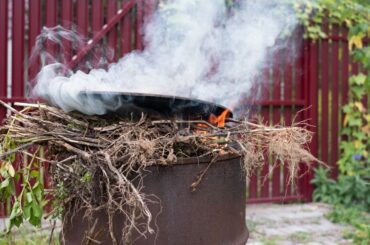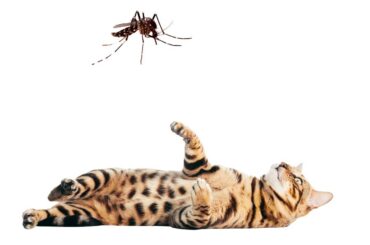Will Spiders Die in Cold Temperatures? In cold temperatures, many spiders become sluggish and less active, and their metabolic processes slow down. While some can survive freezing temperatures by entering a state of hibernation or producing antifreeze-like compounds, extreme cold can be lethal to certain spider species.

When temperatures start dropping as winter approaches, you may wonder what happens to spiders that have spun webs and set up camp around your home. Do these creepy crawlers perish in the freezing cold or do they have survival tricks up their many sleeves? Let’s examine how different spider species are equipped to handle plummeting mercury.
A Chill in the Air Doesn’t Deter Most Spiders
To the surprise of many, the majority of spiders are remarkably resilient against cold conditions. Thanks to behavioral and physiological adaptations, they have found ways to ride out winter’s worst. The key is finding insulation.
Most spiders will not freeze solid until temperatures approach -5°F. By burrowing into leaf litter, loose soil, wood piles, and other shelters, they can buffer themselves from frigidness and prevent their bodily fluids from turning to ice. It’s similar to how bears dig dens to hibernate protected underground.
Additionally, some species have an antifreeze-like compound (thermal hysteresis glycoprotein) in their tissues that lowers the freezing point so they can supercool without becoming solid ice cubes. This allows them to remain active as temperatures hover just above freezing. Pretty ingenious!
So while they may enter dormancy, spiders are well-equipped to avoid freezing to death even when your hometown is an icebox.
An Indoor Haven from the Cold
Of course, another prime winter retreat for spiders is inside your cozy, climate-controlled home. Contrary to popular belief, most spiders crawling across your floors and walls didn’t come inside specifically seeking warmth.
The majority have lived their whole lives inside because conditions enable year-round survival. Inside, they are shielded from winter’s wrath while having access to prey like pantry moths, fungus gnats, cockroaches and silverfish.
Some species like house spiders and cellar spiders even prefer the great indoors to outdoor living. For them, your home is a tropical paradise lacking natural predators where they can spin webs and breed in peace.
So don’t be surprised to see just as many, if not more, spiders prancing around your basement this January versus July. For residential spiders, winter is business as usual.
Outdoor Enthusiasts That Thrive in Cold
While most spiders would rather avoid bitter winter if possible, some hardy varieties actually relish and thrive in icy conditions. The more northern a spider’s habitat, the more cold tolerant they have evolved to be.
Take the spruce spider, for example. These petite markings make their home on the bark and needles of evergreen trees like spruce, fir and pine. Even in snowy mountains with subzero temperatures, they continue hunting prey during daylight hours all winter long.
Jumping spiders are also undeterred by cold and snow. Their furry coats provide insulation as they actively prowl across frozen landscapes. And wait until you see a wolf spider’s thick booties made for snow trekking! No matter the weather, these intrepid hunters won’t let winter cramp their style.
Seeking Sheltered Hideouts
When we imagine spiders braving winter outdoors, we may picture them making snow angels and throwing frost-covered snowballs. In reality, most outdoor spiders try their darnedest to avoid directly exposing themselves to winter’s wrath.
Here are prime hideouts spiders hunker down in until warmer conditions prevail:
- Under rocks, logs, and piles of dead leaves or mulch
- Inside hollow logs and abandoned burrows
- Within brush piles and dense evergreen foliage
- Tucked into cracks and crevices of trees, stumps, and manmade structures
- Inside sheds, garages, and exterior nooks of homes
- Within insulation in soffits, overhangs, and external walls
By safely ensconcing themselves in snug shelters buffered from harsh winds, wetness, and fluctuating temperatures, spiders can ride out winter in relative comfort.

Cocooning Allows Inactivity to Conserve Energy
Some spider species employ another clever trick to pass the winter months: wrapping themselves in a protective silk ball called a cocoon or hibernaculum. Think of it like crafting their own personal sleeping bag!
Inside this insulating cocoon spun from their silk, spiders can remain safely inactive and conserve precious energy reserves. Heart rate, metabolism, and other functions are slowed dramatically.
Come spring, the groggy spider will emerge hungry and ready for mating. Cocooning grants survival without needing to hunt prey or migrate during winter.
Common cocoon creators include orb weaver spiders, garden spiders, funnel weavers, and crab spiders. Scan trees and shrubs and you may spot a dangling cocoon waiting out winter.
Winter Web Weavers
While warmer months make for better web building conditions, not all spiders abandon their craft in winter. Some simply modify techniques and web placement.
For instance, sheet web spiders build smaller webs close to the ground or even beneath the snow surface during winter. Ground spiders also move their funnel-like webs into earth tunnels to escape the exposure.
Other opportunists take advantage of abandoned bird nests, building intricate webs inside cavities for protection. So don’t assume every winter web spotted high in a tree is merely months old and abandoned. Some could house cold-defying architects!
Will Any Spiders Perish in the Cold?
Given all these remarkable adaptations, you may assume every spider is impervious to winter’s fury. But there are a few exceptions.
Most spiders native to temperate climates have inherited physiological defenses and behaviors over generations that allow winter survival. However, spiders that evolved in consistently warm tropical environments lack protections against plummeting mercury.
Non-native species transported outside their ideal climate zones, like the Brazilian wandering spider, face high mortality when temperatures drop substantially below freezing. They simply never adapted mechanisms to survive cold.
Elderly, very young, and other weakened spiders are also vulnerable if they fail to find proper shelter and food sources to wait out freezing conditions and prey scarcity. But the vast majority survive to spin another day.
Preparing Your Home for Unwanted Winter Guests
While most spiders you encounter in winter are year-round homebodies versus new trespassers, you likely want to discourage them from sharing your space. Here are tips to spider-proof your home:
- Seal cracks and openings where they may enter.
- Vacuum up existing webs and spiders.
- Reduce moisture and humidity they need to thrive.
- Eliminate food sources like other insects.
- Use natural repellents around entrances.
- Keep attics, basements, and storage areas clean and dry.
- Inspect items like firewood before bringing them inside.
- Call a pest control professional for severe infestations.
The next time you spy a spider scuttling across your floor as temperatures drop, know it’s well-adapted to handle the winter. While chilling weather may make you want to hibernate under a blanket, most spiders will power through the cold season no problem!

Common Questions About Spiders in Winter
How do spiders survive freezing temperatures outside?
They use insulation like leaf litter or cocoons and have antifreeze-like fluid that prevents ice formation. Some species also lower their metabolism to require less energy.
What do spiders eat during winter?
Outdoors they eat frozen insects, larvae, and eggs. Indoors they eat stored product pests, flies, and other arthropods living in buildings year-round.
Where should I check my home for winter spiders?
Attics, basements, crawl spaces, garages, shed eaves, around windows/doors, and in storage areas with clutter or cardboard. Also inspect holiday decorations.
Can spiders live under snow?
Yes, the subnivean space under the snow layer provides insulation from harsh weather and wind. Some build webs and hunt here.
Do spiders hibernate in winter?
They enter a dormant state called diapause that’s similar to hibernation and allows them to conserve energy and survive without actively hunting prey.
How do I keep unwanted spiders out of my home in winter?
Seal cracks, install screens, use pest control, eliminate insect food sources, dehumidify, and vacuum regularly to discourage indoor spiders.
Are there spiders that cannot survive winter cold?
Tropical species like the Brazilian wandering spider lack adaptations to handle below freezing temperatures and will perish when transported outside their native climate.
Read Next: Do Mosquitoes Bite Cats? Why Not





